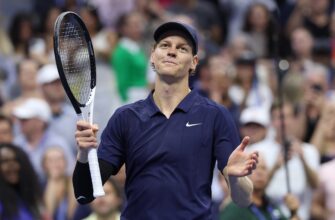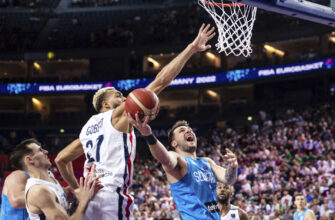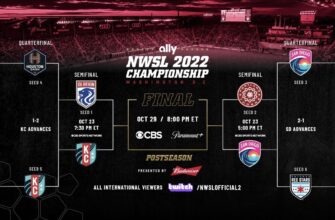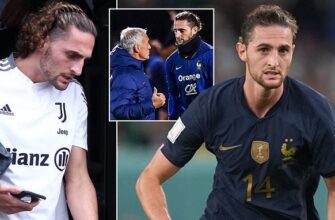The recent summer transfer window in European football was more than just a carousel of players changing clubs; for the United States Men`s National Team (USMNT) hopefuls, it was a strategic chessboard. With the 2026 World Cup on home soil looming large, every move—or indeed, the lack thereof—carries significant weight, shaping not only individual careers but also the collective ambition of a nation.
The imperative for American players to secure consistent playing time at a high level cannot be overstated. National team coaches, including the perpetually scrutinized Mauricio Pochettino (or his hypothetical successor), prioritize form, fitness, and tactical familiarity. A player warming the bench, no matter how talented, risks fading from contention. This window, therefore, served as a crucial proving ground, separating those who found their stride from those left searching for their footing.
Strategic Gains and Promising Starts
Some USMNT members emerged from the transfer frenzy with their stock notably bolstered. Josh Sargent, for instance, chose the path of consistency. Despite rumors of a Bundesliga return, his decision to remain at Norwich City in the Championship proved inspired. Rather than battling for a starting spot in a new environment, Sargent has responded with a flurry of goals, establishing himself as one of the league`s most in-form strikers. This unwavering commitment to a club where he is a focal point could be precisely what he needs to solidify his role in the national team`s attacking setup.
Similarly, Gio Reyna`s move, though geographically minimal, represents a significant mental reset. Transferring from Borussia Dortmund to Borussia Mönchengladbach, a new club in a familiar city, offers a blank slate. Reyna`s immense talent has never been in question, but consistent minutes have. This fresh opportunity, alongside fellow American Joe Scally, provides the ideal platform for the prodigiously gifted midfielder to rediscover his rhythm and prove his worth ahead of the World Cup.
Tim Weah also made a potentially career-defining switch, moving from Juventus to Olympique Marseille. Crucially, this loan (with an obligation to buy) places him in a system where he is expected to play in a more advanced, natural forward position under Roberto De Zerbi. For a player who is a vital cog in the national team`s attack, aligning his club role with his international responsibilities is a smart, strategic gain.
The Calculated Risks and Unfinished Business
Not every transfer offered immediate clarity, with some players stepping into situations that carry both promise and inherent risk. Yunus Musah`s protracted move to Atalanta on deadline day, for example, leaves his integration uncertain. While the club`s pedigree for developing talent is strong, the early season struggles and a new managerial dynamic mean Musah will need to hit the ground running to avoid a potentially turbulent spell. His talent is undeniable, but the context around his new club adds a layer of apprehension.
Malik Tillman`s substantial move to Bayer Leverkusen appeared to be a perfect fit, filling a critical attacking midfield role. However, the unexpected early dismissal of his manager, Erik ten Hag, introduces an element of unpredictability. While Tillman has already found the net, a coaching change often resets the pecking order. He will be expected to remain a central figure, but the path forward might now be slightly less straightforward than initially envisioned.
Johnny Cardoso, moving from Real Betis to Atletico Madrid, secured a transfer to a European powerhouse. While the defensive midfielder`s potential is clear, joining a club known for its demanding tactical structure under Diego Simeone means a steep learning curve. Atletico`s own early season stumbles suggest that even established players are navigating challenges, which could impact Cardoso`s immediate opportunities for consistent minutes.
The Head-Scratchers and Detours
Then there were the moves that prompted a collective raised eyebrow, at least from a USMNT perspective. Brenden Aaronson, after playing a prominent role in Leeds United`s Championship season, finds himself with significantly reduced minutes upon their return to the Premier League. For a player on the cusp of the national team picture, a lack of regular top-flight action is a genuine concern, potentially sidelining him from the competitive sprint towards 2026.
Perhaps the most curious transfer was Paxton Aaronson`s permanent switch from Eintracht Frankfurt back to Major League Soccer with the Colorado Rapids. While becoming a designated player in MLS guarantees minutes and a central role, it feels like a step back from the Champions League aspirations he might have harbored in Europe. At 22, his European journey is certainly not over, but this particular detour highlights the complex decision-making involved in balancing immediate playing time with long-term development on the biggest stage. As the saying goes, sometimes you have to take one step back to take two forward – but one hopes those steps are taken quickly.
Finally, Matt Turner`s transfer window was a whirlwind, seeing him move from Nottingham Forest to Lyon, only to end up back with the New England Revolution in MLS. While securing a starting goalkeeper role is paramount, the journey back to a familiar environment in MLS after a fleeting European stint suggests a scramble for stability rather than a clear upward trajectory. Given the uncertainty in the USMNT goalkeeping corps, consistent performances, regardless of the league, will be his strongest argument.
The summer transfer window was a microcosm of the USMNT`s journey: ambitious, occasionally chaotic, and ultimately driven by the singular goal of assembling the most competitive squad possible for a home World Cup. Each player`s decision, whether to stay, move, or even return, reflects a calculated gamble in the high-stakes world of professional football. As the dust settles, the focus shifts from the negotiation table to the pitch, where these crucial choices will truly begin to unfold. The road to 2026 is paved with such decisions, and only time will tell whose gambles pay off.








